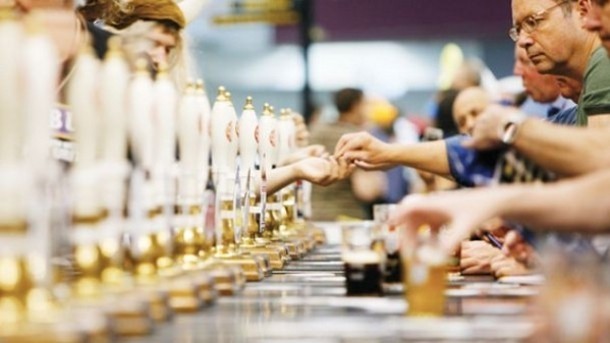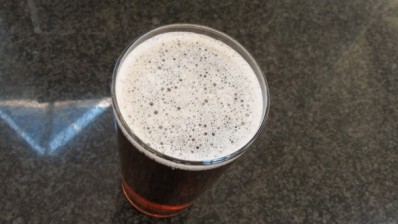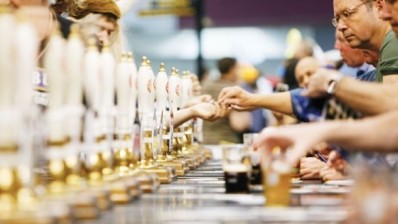Analysis: Cask continues to rise in popularity

Real ale and beards are closely linked in the popular imagination. So could recent media speculation that the modern hipster fashion for beards is on the wane spell disaster for cask beer?
Well, perhaps the ties between the two cultural phenomena aren’t as close as we supposed. While the evidence mounts that we’ve reached what has been dubbed ‘peak beard’, there’s little sign that we’re about to hit ‘peak cask’.
British breweries are opening at the rate of four a week and have passed the 1,700 mark, between them making an estimated 11,000 beers, with cask usually the first-choice format.
The 2015 Cask Report put cask’s share of the total ale market at 57% and suggests that this will rise to 70% — and 20% of the total beer
market — by 2020.
With pub numbers still in decline, albeit at a slowed rate, logic suggests that there won’t prove to be enough business to go round and we can expect some medium to long-term shake-up in brewery numbers.
But for now, the ones that are making top-quality beer are giving pubs more and more points of difference from the supermarkets with the imaginative range of styles they’re putting out.
There was once a time when many licensees needed persuading that cask ale was something they should get behind but, for most, it’s now a given.
The arguments for cask beer are compelling. Apart from a handful of specialist beer shops, pubs are the only place that anyone can buy cask beer.
As the Cask Report shows, real ale drinkers go to the pub more often, they spend more money when they do, they’re loyal to the pubs that they know serve cask beer well and they are frequently the decision makers among their social group about which pubs to visit.
More intangible benefits also accrue from being a good cask ale pub, such as a sense of tradition or authenticity, and the impression that a well-served pint of live beer can give about the standards of the business as a whole.
“It’s a very good bellwether of the service ethic of a pub and will give the impression that everything else about the pub is good as well,” says Edward Theakston, an on-trade consultant who advises Star Pubs & Bars outlets on cask-ale cellaring and service.
It’s difficult to measure but, anecdotally, the overall condition and quality of serve of a pint of cask ale has increased immeasurably during the past couple of decades. Anyone who remembers pubs in the 1980s and 1990s will recall the frequency with which pints of vinegar masquerading as real ale were dished up — an occurrence that is, thankfully, now a rarity.
Rupert Thompson, owner of Surrey’s Hogs Back Brewery, says: “The quality of cask ale is generally very good and most landlords have got a lot better at looking after it. Cask Marque has had a lot to do with it.”
The industry initiative promotes the quality serving of cask ale inBritish pubs and provides a benchmark for consumers to judge them.
But despite the advances made, not everyone is yet getting it right. Too little throughput to justify the number of beers being sold, or too little or too much rotation, are among the common constructive criticisms that many brewers make in their assessment of the cask-ale landscape.
Theakston suggests striking a balance between having regular, well-known beers from established brewers and rotating new beers to satisfy the real-ale buffs.
“You’ve got to satisfy all your customers, not just the noisy ones, especially if the noisy ones don’t really understand the commercial realities of running a pub and the importance of things like throughput,” he says.
As a general rule of thumb, the Cask Report suggests not adding another handpump to the bar unless the existing lines are selling a firkin every three days.
Ross Evans, licensee at the Ship Tavern in Holborn, central London, recommends serving a variety of styles, rather than falling into the
trap of putting half a dozen identical 4% ABV golden ales on the bar.
The pub has its own-badged 1549 brand — named after the year the pub was founded — and three other regulars in St Austell’s Tribute, Deuchars IPA and Theakston Old Peculier.
He then rotates beers on two more pumps, switching to daily rotation on each during a May bank holiday weekend beer festival promotion.
“It’s not easy to maintain. You have to work at it,” Evans says. “Some licensees do seem intimidated by it, but it’s relatively easy to learn and, if you can keep a good selection of cask beers, it says a lot about the all-round standards of the pub.”
The flip side to offering a wide choice — and the variety that brewers have to offer — is the risk of listing beers that sound like a neat idea but don’t really deliver the goods.
Bath Ales has pushed the boundaries in range at its Beerd — but by no means ‘peak Beerd’! — venues in Bristol and Oxford but sales director Mark Harding says it takes a considered approach to its range.
“To us, craft beer is never about novelty for the sake of it,” he says. “Beerd has given us licence to create some really innovative and different styles of beer, and reach a slightly younger customer base, who like to try more unusual beers.”
One aspect that drives variety in the marketplace is seasonality, which sees many regional and local breweries producing an annual line-up of old favourites that return every 12 months, or completely new spring, summer, autumn or winter beers each year.
Black Sheep has just reintroduced Holy Grail, a long-running seasonal favourite created in honour of Monty Python and, this year, sold with the appetising tagline “your mother was a hamster and your father smelt of elderberries”, taken from the film the beer’s named after.
Managing director Rob Theakston says: “We try to do one every two months and react to the market and what’s new.
“It provides variety for our customers and consumers, and allows us to play around with different beer styles. It’s a fun thing to be able to do.”
Paul Halsey, managing director of Warwickshire’s Purity Ales, advises lighter beers for summer and darker beers for winter as a rough rule of thumb on seasonality but says that quality trumps any other considerations.
“For us it’s about offering quality and consistency,” he says. “Some pubs offer too much choice and don’t get the throughput to justify it.
“There’s a lot of work to be done on ranging and sometimes licensees put on the beers they like rather than the ones that the customers want to drink.”
Thompson at Hogs Back Brewery agrees: “Some customers do want to always be trying new beers, but over-rotation can be a problem where
customers have found a beer they like and then go back to a pub to find that it’s not there any more.”
He adds that pubs should “build relationships with brewers” to get ahead of the game with innovation.
“You’ll find that if you support them, they will support you,” he says.







